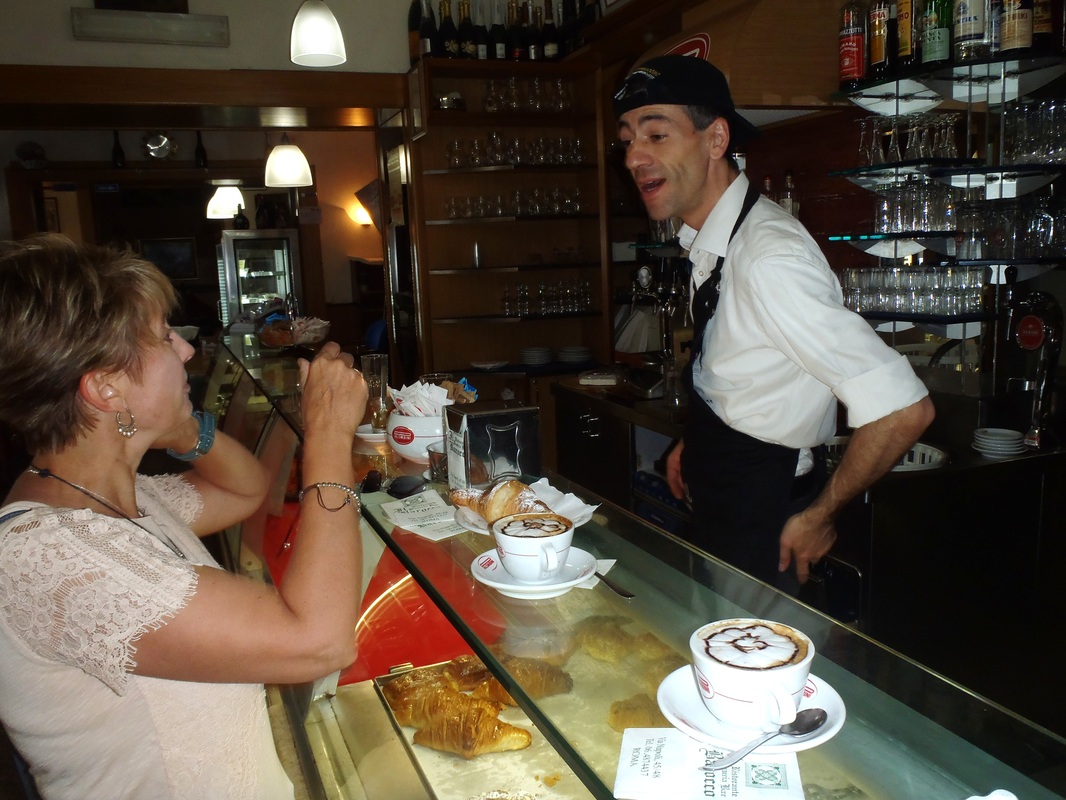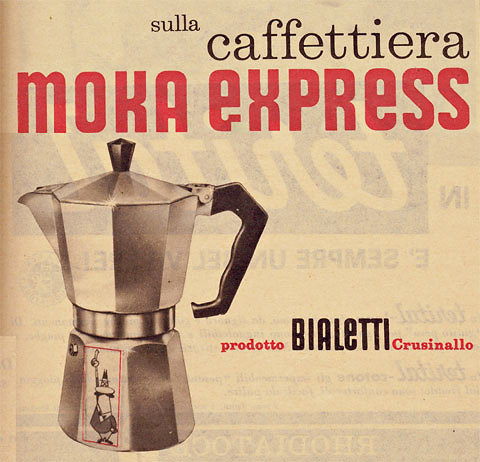Everyday in Rome, my husband and I went to this little coffee bar around the corner and had a cappuccino and a pastry to start our morning. (I'm not continuing the pastry habit, since that wouldn't be good for me, and to be honest, I only like pastry when traveling). However, I noticed that having a good cappuccino in the morning was a truly nice way to start the day and seemed to have a better effect on me physically and mentally than the cups of drip coffee with no sugar--but way too much cream--that I have been normally slugging down each day. Part of this has to do with the quality of the coffee (hotter, fresher, stronger) and the fact that heating the milk makes it far more digestible. (Look into a pan in which you've heated milk and you'll see the solids left behind--clean right away if you know what is good for you!) Part of the joy I experienced with my Italian coffee was the ritual and part was the product. Now I had to figure out, how do I replicate this at home?
Being an academic, my first line of attack is always to dive into research. I went on Amazon and started investigating espresso makers. Whoa--even I was not prepared for the deluge of information. What distressed me most was the variety of opinions out there and the amount of specific, negative feedback on nearly every machine regardless of price. I came to the conclusion that I could spend a lot of money on a piece of equipment that produced a lukewarm, weak cup of coffee.
And here's the thing: I'm cheap and not looking to spend a fortune, especially without guaranteed results. With my research, I kept coming back to simplicity. Why not try the traditional Bialetti espresso pot? These little beauties, made of aluminum with a bakelite handle have been gracing European kitchens since 1933. They've become so iconic that you'll see them displayed in houseware exhibits at Museums like the Victoria & Albert in London or the Cooper-Hewitt in New York. Best of all, they can be had easily for under $50 and operate right on your stove burner. Now my problem was how to get that frothy milk that makes the drink special? Again, I hit the sites. The expensive machines come with a steaming frother function, but if I wasn't going that route then how was I going to emulate the results? There were independent frothers that looked like French presses, but I thought--how many pots and pans do I want to dirty for a cup of cappuccino? IKEA came to the rescue. They sell a tiny, efficient hand-held frother that could be shipped to me for under $7. As luck would have it, my father had a large Bialetti pot that he'd bought years ago that he was willing to let go since he also has a Starbucks espresso maker.
Away I went with my experiment! I found the frother delightfully easy and light. The Bialetti pot makes coffee quickly and piping hot. Cleanup is easy and I don't have devote a bunch of counter space to a machine. I top our cappuccinos with some ground cinnamon (naturally sweet and good for balancing blood sugar). Now, we wake up eager to go make and enjoy our morning coffee. Each cup takes us back to our awesome vacation. What's the "take-away" from this? Two things: little changes in daily routine can have a big impact in terms of quality of life AND there is nearly always a cheap and easy solution to getting what you want if you put thought and energy into engineering your final results.
As always, I'll leave you with some exercises to play with:
- Think back upon your favorite vacations, make a list. What are the small things about each trip/place/culture that made you happy? (Examples: the peace and quiet, the hustle and bustle, good artisan bread, the sound of waves, the way people dressed, the music, the nightlife, the museums, a regional dish--you get the idea).
- Now get specific. For example, if your answer was "the music I heard"--what kind of music? (Cajun, country, improvisational jazz, grunge). If the answer was "the food I ate"--what dishes, seasonings, atmosphere?
- Now figure out how to incorporate it into your life. This could mean buying a cd/mp3 recording, finding local venues with live music, looking for a recipe, baking bread weekly, buying an alarm clock that wakes you up with the sound of waves, or changing your morning coffee ritual. :) Think small, inexpensive, and easy. Have fun with the quest.
- Now DO IT. You may not be able to afford a lakefront vacation cabin, but how about re-making your family room to resemble a lodge? How about nature sound cd's that take you to that place? How about a screensaver with a lake scene? How about a couple of freshwater fish recipes that remind you of that time--like a simple pan-friend trout? You get the idea.
Let your travel transform you in small but meaningful ways. This is the best part of the experience and makes it worth the money, time and energy. Why spend hundreds, even thousands, of dollars without long-term benefit? Capitalize on your investment and alter your life for the better!
Artfully Yours--Lisabeth


 RSS Feed
RSS Feed